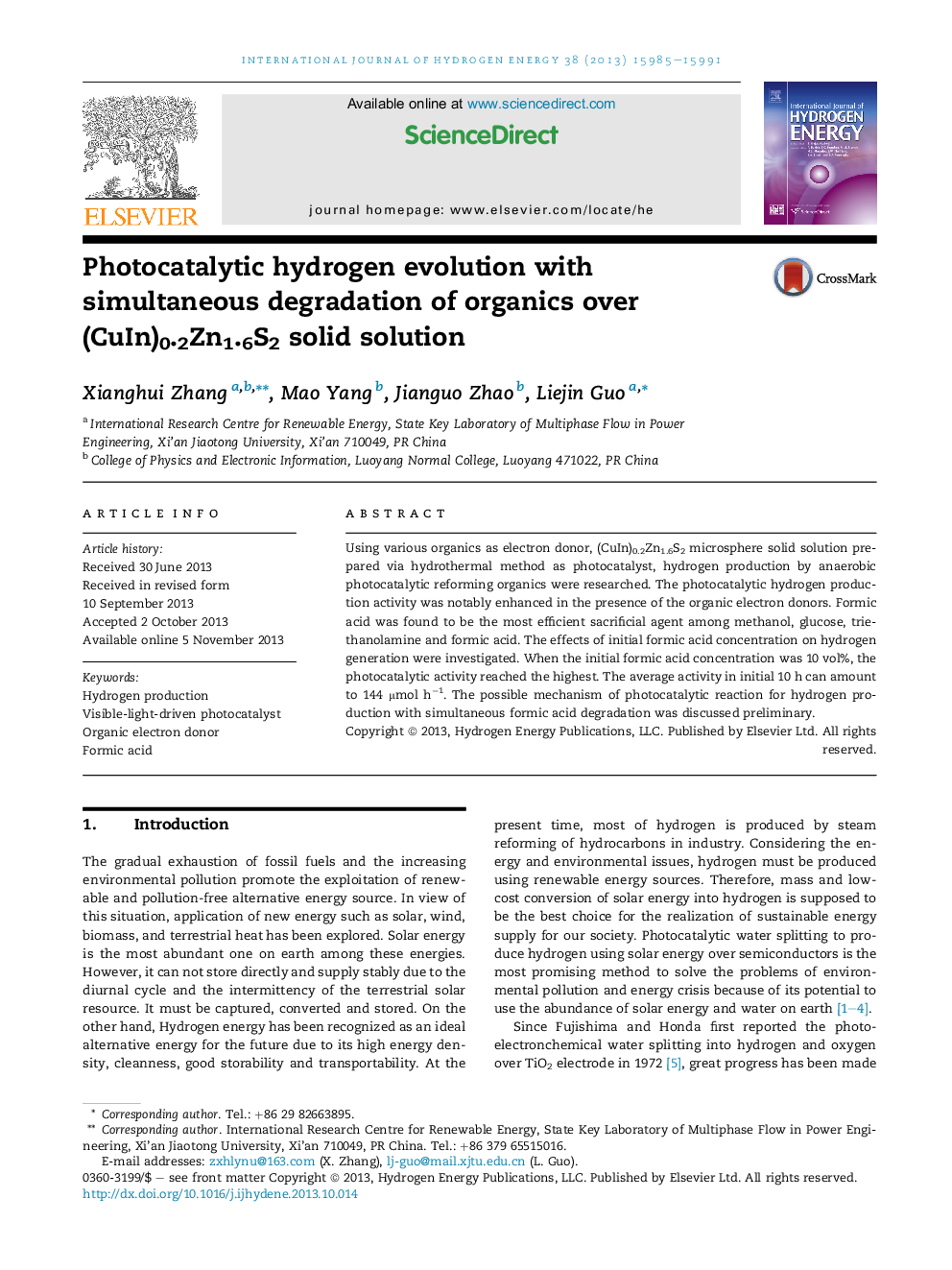| Article ID | Journal | Published Year | Pages | File Type |
|---|---|---|---|---|
| 1274159 | International Journal of Hydrogen Energy | 2013 | 7 Pages |
•Hydrogen can be produced from organic agent solutions over (CuIn)0.2Zn1.6S2.•Formic acid is the most efficient sacrificial agent due to its simple structure.•The possible mechanism of the photocatalytic reaction was discussed preliminary.
Using various organics as electron donor, (CuIn)0.2Zn1.6S2 microsphere solid solution prepared via hydrothermal method as photocatalyst, hydrogen production by anaerobic photocatalytic reforming organics were researched. The photocatalytic hydrogen production activity was notably enhanced in the presence of the organic electron donors. Formic acid was found to be the most efficient sacrificial agent among methanol, glucose, triethanolamine and formic acid. The effects of initial formic acid concentration on hydrogen generation were investigated. When the initial formic acid concentration was 10 vol%, the photocatalytic activity reached the highest. The average activity in initial 10 h can amount to 144 μmol h−1. The possible mechanism of photocatalytic reaction for hydrogen production with simultaneous formic acid degradation was discussed preliminary.
